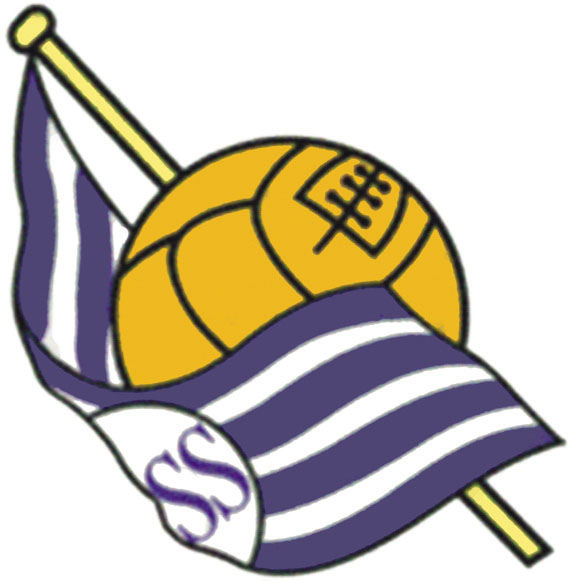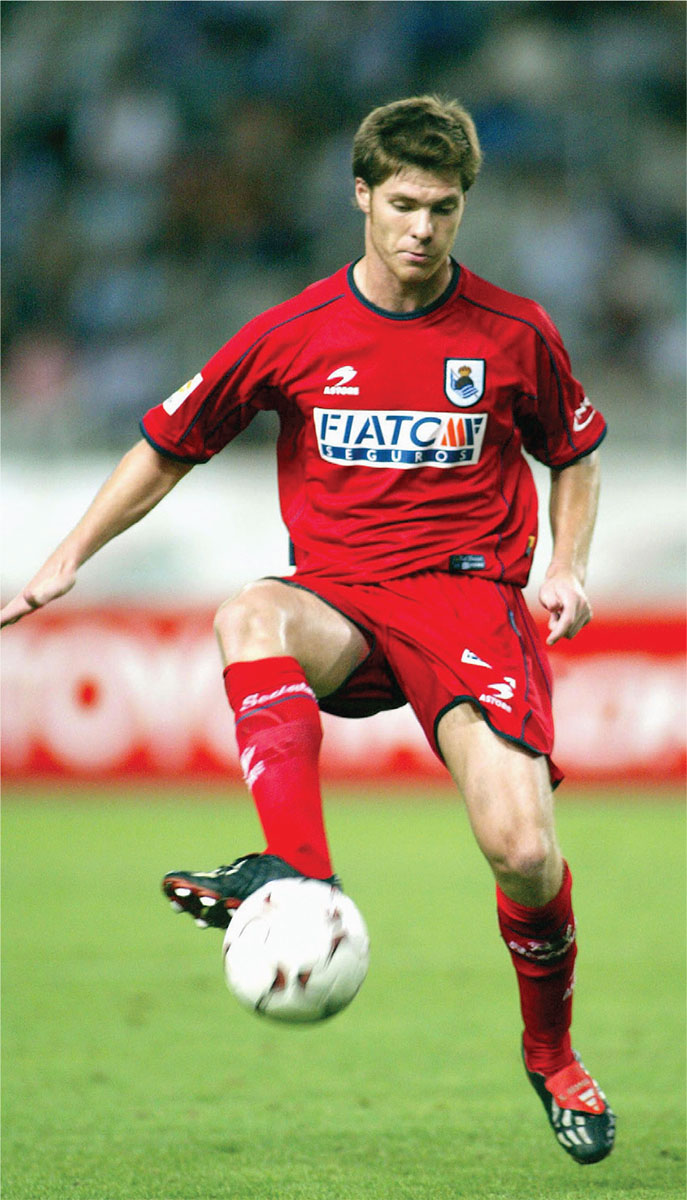
REAL SOCIEDAD
ROYAL FOOTBALL SOCIETY
Founded in 1908 and one of the founding members of La Liga, the San Sebastián club received royal patronage in 1910 because the city was the monarch’s summer residence. This meant they could now be known as Real Sociedad, or ‘Royal Society of Football’, a connection that is revealed through the club crest. The team’s colours stem from the city’s flag: a blue canton on a white field.
The most successful years for La Real came in 1980 and 1981, when the club managed to win two consecutive league titles. Then, in the spring of 2003, Real Sociedad were agonisingly close to staging one of the greatest shocks in modern Spanish football. In an era dominated by the giants Real Madrid and Barcelona, Real Sociedad nearly won the Primera División. With two remaining fixtures, they were on top of the league, but a 3-2 defeat to Celta Vigo meant that the title once more ended up in Madrid.
Like Bilbao, Real Sociedad used only Basque players until 1989, when the Irish striker John Aldridge was bought from Liverpool. The decision to abandon the policy was taken the previous year. Foreign players were now welcome in Real Sociedad, but not until 2001 would Spanish players from outside the Basque region be allowed to represent the club. The transition was not painless. For instance, Aldridge’s arrival was criticised for not recognising local traditions. Today the situation is rather different: Aldridge spent only two seasons in San Sebastián, but is nowadays seen as a club legend, celebrated by fans for having broken down barriers.
CLUB: Real Sociedad de Fútbol
NICKNAMES: Txuri-urdin (the White and Blues), Erreala and La Real
FOUNDED: 1909
STADIUM: Anoeta, San Sebastián 25,000 capacity)
HISTORIC PLAYERS: Jesús Maria Zamora, Alberto Górriz, John Aldridge, Valery Karpin, Darko Kovacevic, Nihat and Xabi Alonso

1910–1931 Real Sociedad was founded in 1909 in the Basque town of San Sebastián, a holiday resort often visited by King Alfonso XIII, who granted the town his royal warrant. In the club’s first emblem, this was reflected via the crown above the football. The third part of the emblem consists of a blue and white flag with the city’s initials. The colours were taken from the town crest of San Sebastián.

1931–1940. King Alfonso XIII was forced to leave the country in 1931 after political unrest, which led to the crown being removed from the emblem. The club changed its name to Donostia Club de Fútbol, Donostia being the Basque name for San Sebastián.

1997–present. The year after the end of the Spanish Civil War (1936–1939) the crown was back in the emblem and the name had changed to Real Sociedad, or the Royal Society. The emblem has changed very little since then, even if details like the stitching of the football, the initals and the crown were updated in 1997.

In January 2001, Real Sociedad were bottom of the league when in a surprise move 20-year-old Xabi Alonso was made team captain. Despite his youth and relative inexperience, Alonso guided the team to 14th place and safety by the end of the season.